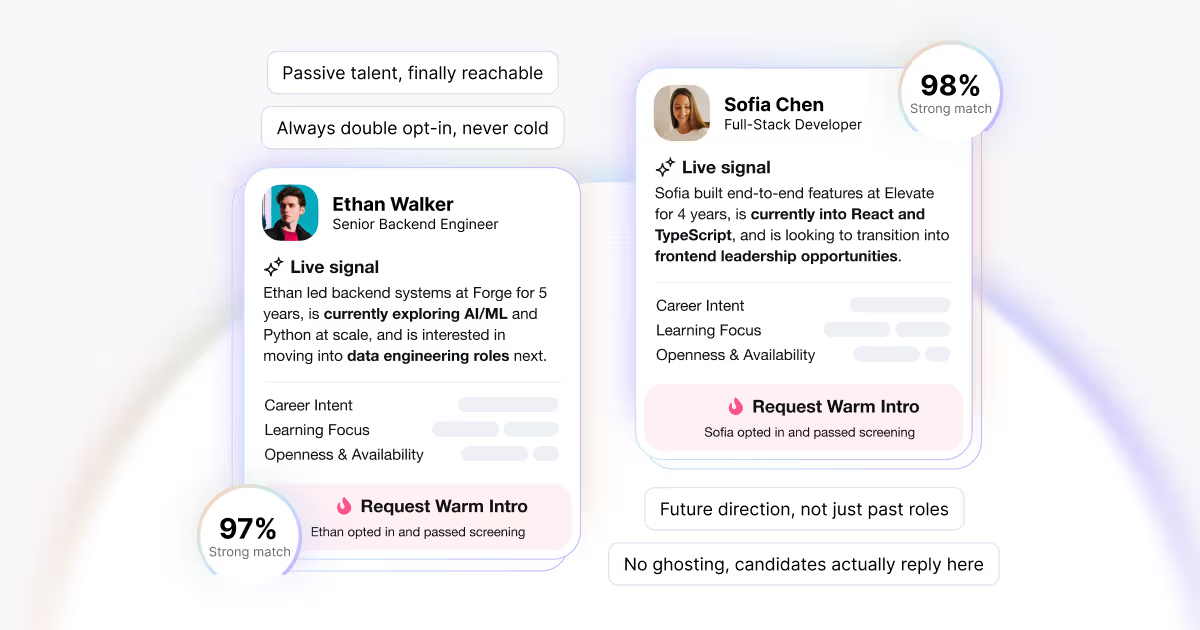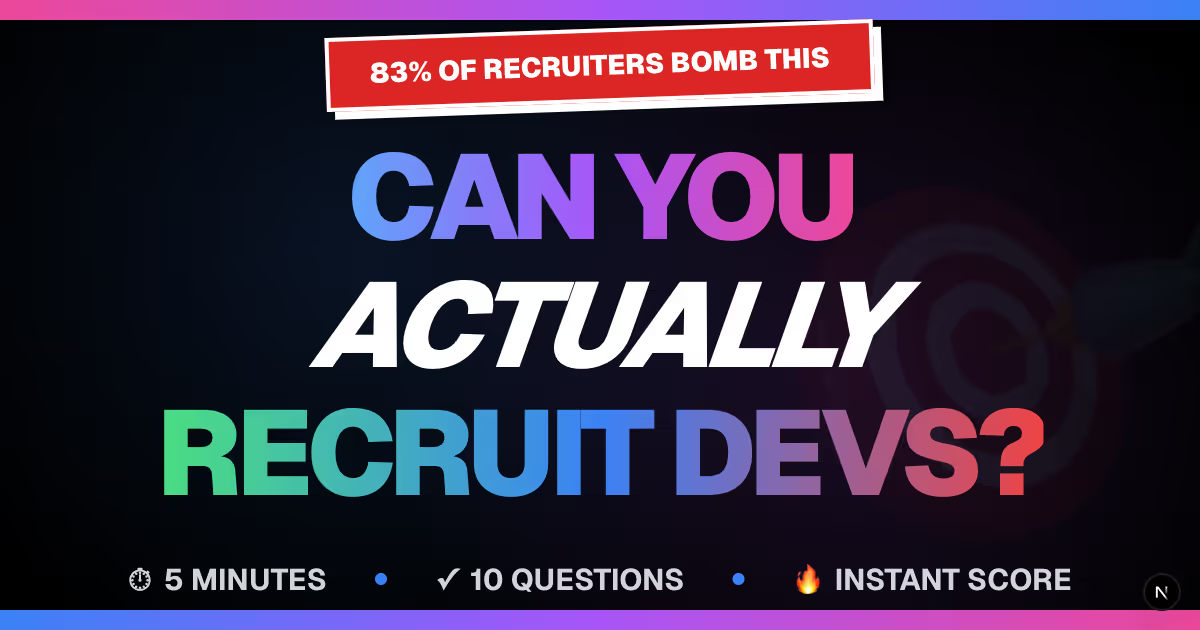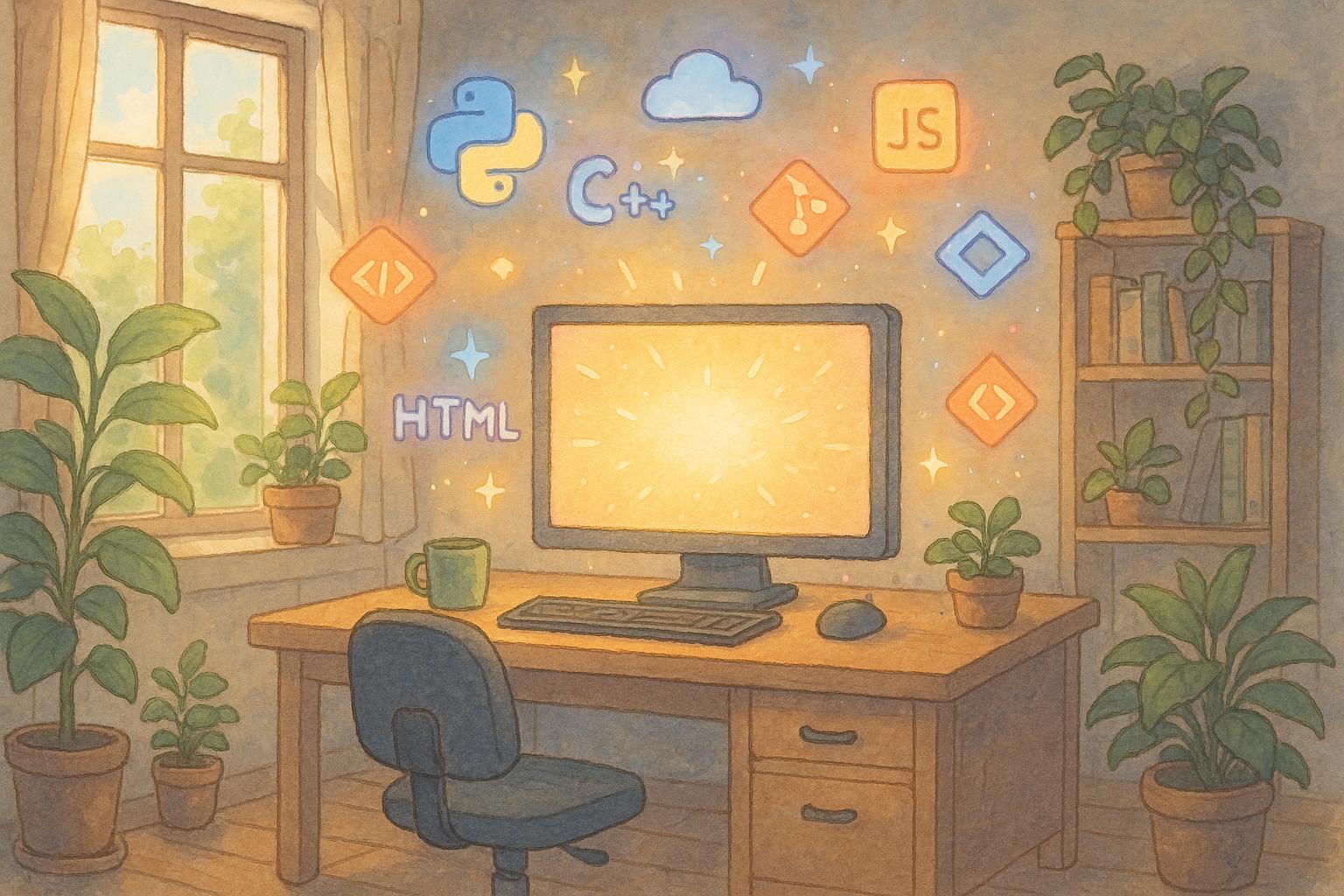


We asked developers what’s broken in hiring. Their answers: trivia interviews, ghosting, vague roles, fake jobs, and AI noise. Here’s how to fix it (for real).
We asked developers a simple question: what’s broken about hiring right now? Sixty-six comments later, the picture is painfully clear. It’s not one thing. It’s everything - the signals we value, the hoops we design, the way we communicate (or don’t), and the trust we keep burning.
This post isn’t a dunk session. It’s a mirror. If you hire technical talent (engineers, data folks, platform, AI/ML) this is what they’re living through. And it’s fixable if we’re willing to change what we measure, what we test, and how we show up.
The signals we reward are upside-down
We heard two “opposites can be true” stories over and over.
On one side:
“Too much emphasis on previous employment record… Some of the best developers I’ve met are self-taught.” — Jordan
On the other:
“Companies believe people who attended university are somehow worse than self-taught… University ironed out my bad habits.” — Jordan
Pedigree wars (self-taught vs. degree) are noise. The signal is can this person solve our kind of problems, with our kind of constraints, with curiosity and care? Right now, we screen for what’s easy to count — logos, years, acronyms — and miss what actually matters: judgment, collaboration, and the ability to learn on purpose.
A close cousin of this: DSA-heavy interviews that ignore real work.
“Someone with zero practical development experience but good at DSA is valued more than an experienced developer who has actually built things.” — Shreyas
There’s a role for fundamentals. But when senior candidates wash out because they can’t hand-code a linked list they’ve never needed on the job, you’re not filtering for excellence — you’re filtering for test prep.
The process is louder than the work
Developers described interview loops that are 10× more complex than the actual job. Take-homes that devour weekends. Six rounds for $220/month. Panels that ask trivia (“how to center a <div>”) for roles that demand systems thinking and product judgment.
“It’s not that hard to train to be a good interviewee. It just takes too much precious time… which is entirely different from the actual work.” — alx_dsz
“If you require a project, pay for it — or give me a realistic task in your stack, then talk through it together.” — Jessy & Tony
The theme: if your process feels like hazing, great people will self-select out. Not because they can’t do it. Because they won’t.
Job posts and comp: vague in, vague out
There’s a special kind of fatigue that comes from reading job ads that want a “junior” with 2–3 years in half the frontend ecosystem, or a “senior” paid like a junior. Years-of-experience math that’s impossible (“5 years of Angular 2 two weeks after release”). And still no salary range.
“I have no idea why I’d want to work for you. You haven’t announced a salary or described the tasks.” — Maksym
Candidates aren’t asking for poetry. They want clarity: stack, scope, where the work happens, compensation, why the role exists, what success looks like. If they can’t find it in ten seconds, they bounce.
Ghost jobs, ghosting people, and the vacuum where feedback should be
This might be the most corrosive part.
“Openings posted for a year, re-posted regularly… companies never respond.” — Ricardo
“Interview → promising feedback → ghosted.” — mr_guy
“Gave all rounds, got a rejection with ‘we can’t provide feedback’.” — Abhishek
Silence is the fastest way to turn a neutral candidate into a detractor. Even a two-line “no and why” beats the black hole. If you’re not really hiring, don’t post. If the role isn’t approved, don’t interview. If the budget can’t support the senior you need, don’t drag seniors through the loop.
AI made the noise louder - on both sides
Automated outreach polished to a dull shine. Résumés and cover letters mass-produced. ATS filters that miss real talent because the PDF didn’t parse. “AI interviews” that feel like talking to a wall.
“AI can write LeetCode answers; why are we still doing pair-to-pair LeetCode?” — RP
“Now I have to design my résumé for the parser, not the person.” — Jeanne
AI can clear grunt work; it cannot fix a trust problem. When we use it to scale the parts candidates hate, we widen the gap.
Mismatch inside the company is killing momentum
A lot of pain isn’t “candidate vs. recruiter.” It’s inside the org.
“We ask for unicorns… then the codebase is 98% legacy.” — Atomys
“Engineers want to hire, but budgets won’t support seniors.” — Ilya
“We don’t know what we need; we write generic questions that don’t tell us anything.” — Louis
When hiring managers, interviewers, and recruiting aren’t aligned on the real work, the loop degenerates into trivia, vibes, and stall-outs. Candidates feel that chaos instantly.
So… what should change?
This is where I plant a flag as a CEO who spends his days with developers and his nights thinking about how to fix hiring.
- Make interviews look like work. Use your stack. Share a small, paid, realistic task or pair live on a trimmed version. Talk through trade-offs. Evaluate how candidates reason, not how they cram.
- Tell the truth in the job post. Stack, scope, salary, constraints. You won’t scare off good talent with honesty; you’ll earn it.
- Close the loop. If you’re not hiring, don’t post. If you’re done with a candidate, tell them — and why, at least in a sentence or two.
- Align inside before you go outside. Calibrate with the team on the actual problems, the real seniority you can afford, and the signals you’ll trust. Stop outsourcing clarity to the candidate.
- Use AI to free up humans, not replace them. Automate reminders, scheduling, parsing. Keep the conversation human.
None of this is radical. It’s just rare. In a market where trust is low and attention is scarce, rare is a competitive advantage.
Why we’re building daily.dev Recruiter the way we are
Our thesis is simple: the old funnel is collapsing because it’s built on cold access and outdated artifacts. Developers don’t live on job boards; they live where they learn. They don’t update CVs in real time; their behavior is the real-time signal. And they don’t owe any of us their attention.
So we’re doing two things differently:
- We start with trust. No cold access. Developers are in control, and intros are double opt-in.
- We surface signal that maps to reality. Past (experience), present (what they engage with), and future (where they want to go).
If we do that well, the rest of this post becomes less of a rant and more of an obituary for practices that should’ve died years ago.
Hiring will always be hard. It doesn’t have to be dehumanizing. Listen to what developers just told us. Fix the parts that are in your control. And if you want help meeting great people without burning the trust that makes it possible, you know where to find us.








